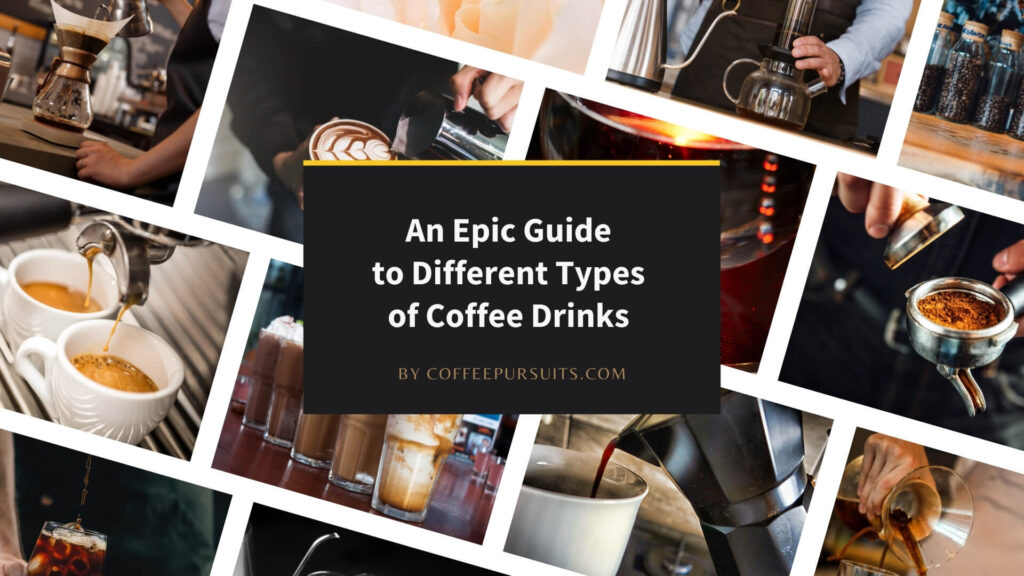
Imagine being able to order your coffee at a cafe without sweating profusely and crying internally. That would be wonderful, right?
Humans have come up with more coffee drinks than there are elements on the periodic table. It can be overwhelming for anyone to remember all the names and what they taste like.
Whether you’re a budding home barista or just someone who likes to explore different types of coffee, this guide is for you.
In the following sections, I am going to list and describe the most popular and some of the lesser-known coffee drinks to exist today.
Bookmark it, take screenshots because you’ll need it later.
- A Comprehensive List of Different Coffee Drinks
- Frequently Asked Questions
- Conclusion
A Comprehensive List of Different Coffee Drinks
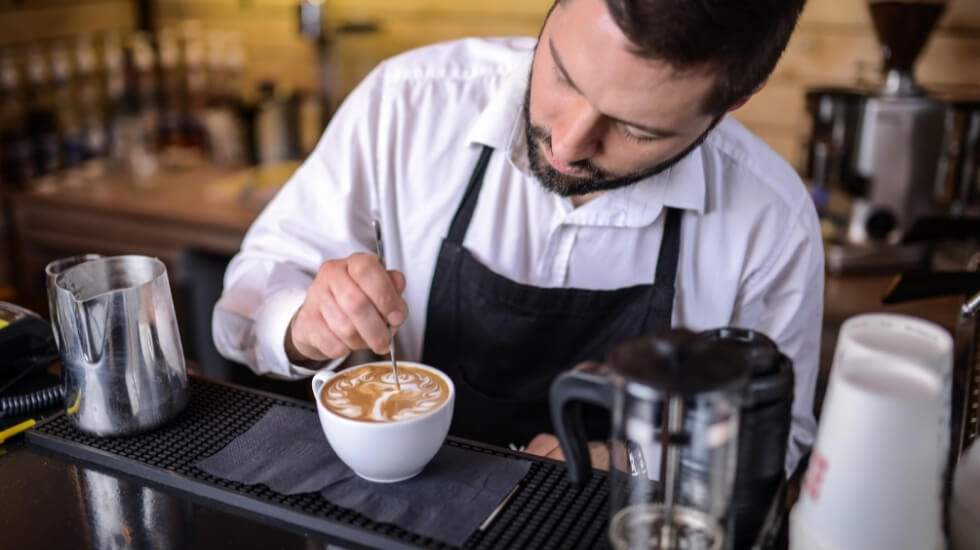
For the sake of clarity, I’ve divided coffee types into two main categories:
- Hot coffee
- Cold coffee.
Let’s dive deep into this and explore the varieties in each category.
Hot Coffee
This one needs no introduction. According to a new study published in Scientific Reports, hot-brewed coffee has higher levels of antioxidants. So, if you are looking to add a healthy beverage to your diet, a hot-brewed coffee would be a better option than a cold brew.
That being said, health benefits aren’t always the parameter we judge coffee with. It all comes down to the taste. Coffee is a preference-based experience.
So I can’t tell you whether you’ll like hot coffee more than cold coffee. But what I can tell you is that cold coffee contains 50-67% less acid than hot coffee.
But then again, the acidity, sweetness, bitterness, texture, and mouthfeel depend on the type of coffee beans you choose.
The roasting profile, grind, size, dosing, and the kind of brewing method you’re using also heavily influence the taste of coffee.
When it comes to hot brewed coffee, the options are seemingly limitless. Below explained almost every known variety of hot brew
Brewed Coffee Types Based on Brewing Methods
Freshly brewed coffee is just another term for black coffee. It’s a generic term used for describing all kinds of coffee brewed by adding hot water to ground coffee. Brewed coffee can be classified into 8 subtypes based on brewing methods :
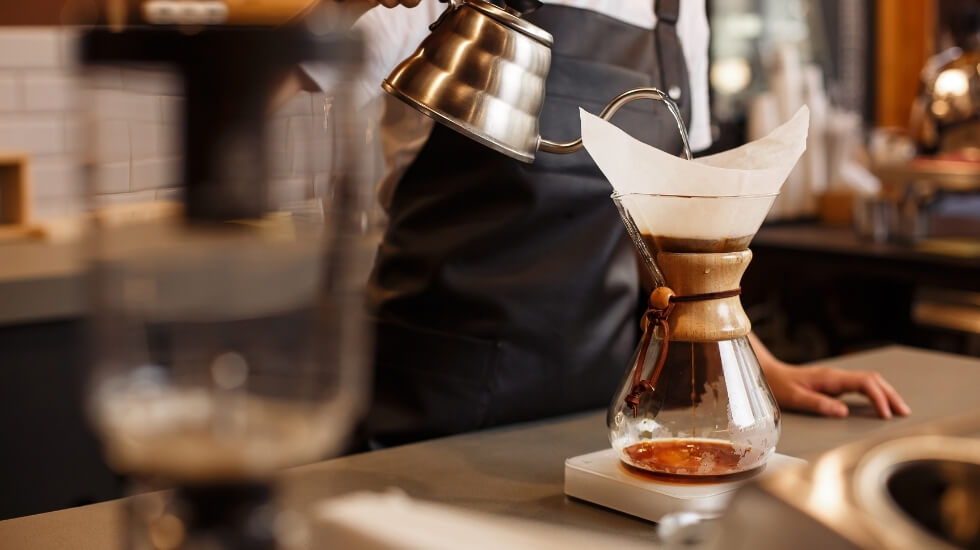
#1: Pour-over coffee
Pour-over drippers, like V60 or Chemex, are the perfect equipment for making a delicate, refined brew. Basically, you place the dripper on a carafe or mug.
Then you have to fold a paper filter into the dripper and fill it with ground coffee. Next, drizzle hot over the coffee bed, maintaining a steady flow. The water trickles down the coffee bed and collects into the carafe.
Taste of Pour-over Coffee: Pour-over is an infusion brewing method. The longer contact time between water and coffee grounds helps to extract the more nuanced flavors of the beans.
I highly recommend the pour-over method for light to medium roast specialty coffees.
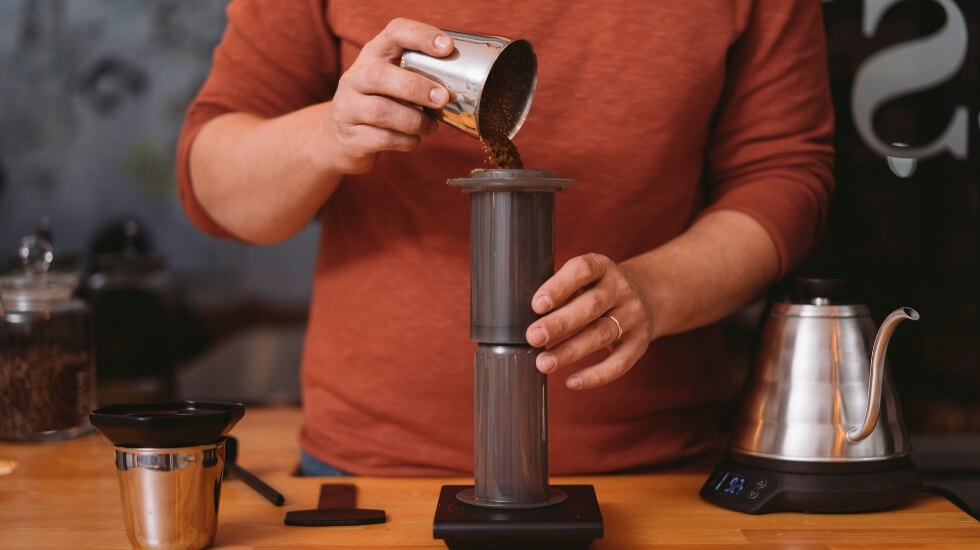
#2: AeroPress Coffee
AeroPress is the latest fad in the third-wave coffee scene. Built to brew a coffee that closely mimics the taste and texture of espresso, Aeropress was a revelation to me.
It makes a fine cup of Joe, minus the complex dialing-in process. An AeroPress requires you manually force the water through the coffee grounds by pushing a plunger. It’s a very compact unit and ideal for travelers.
Taste of AeroPress Coffee: When brewing parameters are properly tuned, you will get a very clean, aromatic cup that highlights the nuanced flavors of the beans.
I consider AeroPress a brilliant brewing tool for high-quality coffee beans.
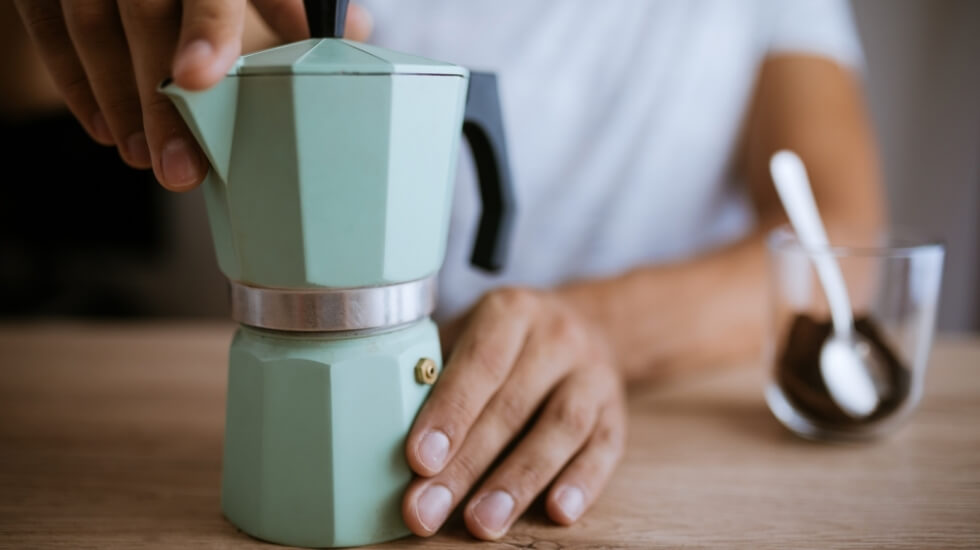
#3: Moka Pot/Stove Top Espresso
Moka pot coffee isn’t espresso lite – so keep your expectations realistic. However, it does make terrific coffee. The brew is very strong and has a light crema, which is why it’s fondly known as stove top espresso.
A Moka pot uses a pressure-based mechanism to force boiling water through ground coffee. The pressure pushes the coffee to the top chamber where it’s ready to be served.
Standard Moka pots generate only 1.5 bars which is nothing compared to 9 or 15 bars espresso machines. However, by grinding the beans a little too fine, you can slightly amp up the pressure in your Moka pot.
Taste of Moka Pot Coffee: Dedicated espresso drinkers would refuse to liken Moka pot coffee to real espresso. But that doesn’t take away from the fact that Moka pot is a godsend for the lovers of strong, bold coffee.
If you want to make cafe-style beverages at home without spending tons of cash on an espresso machine, a Moka pot would be a fantastic alternative.
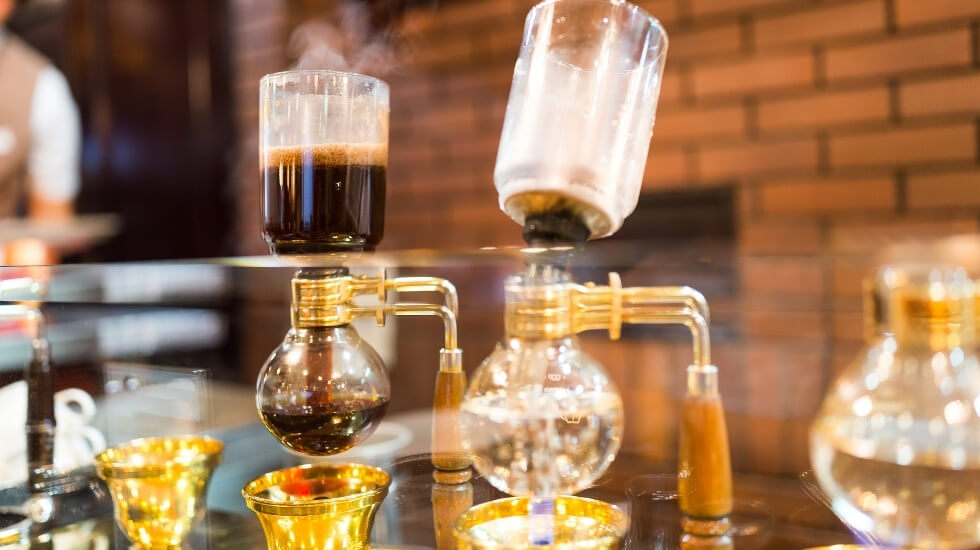
#4: Siphon Coffee
Made in a Siphon Coffee Maker (also known as Vacuum Brewer), this tool was developed in the 1830s. It’s a manual brewing method and requires a very precise temperature. The brewer has two chambers.
The lower chamber is where you add water and boil it. The resulting vapor pressure siphons the water into the top chamber where it saturates the coffee grounds.
Then you turn off the heat and the loss of vapor pressure causes the liquid to drop back (through a filter) into the bottom chamber. And there you have it. Your freshly brewed siphon coffee is ready to be savored.
Taste of Siphon Coffee: The vacuuming brewing method accomplishes a number of things. One, it enhances the aroma of the coffee. Two, it cuts down the bitterness and acidity, leaving you with a bright and ultra-smooth brew.
Lastly, the filter effectively captures all the ground, ensuring a clean cup. If you are into a premium, single-origin coffee, and don’t mind the complexity of the method, do consider getting a Siphon coffee brewer.
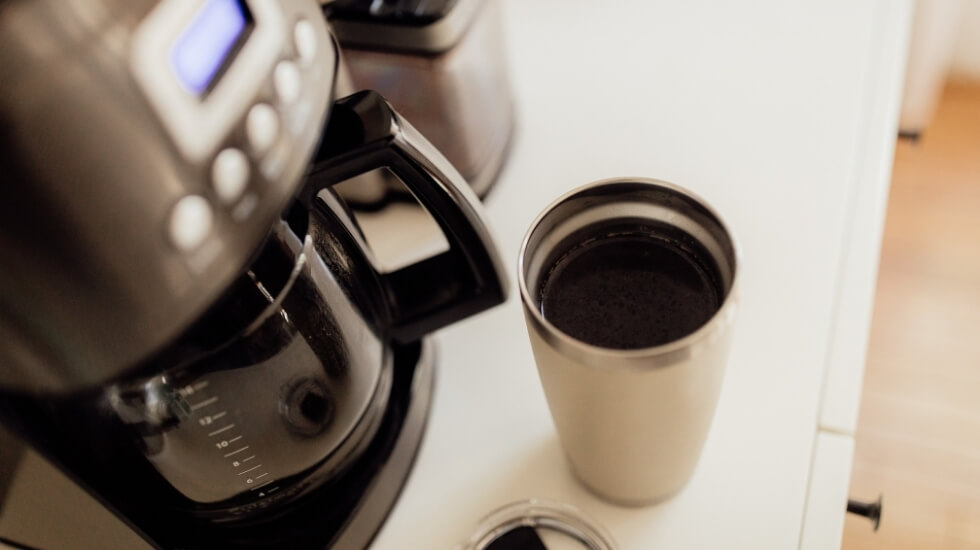
#5: Drip Coffee
For most people, drip coffee is analogous to brewed coffee which is only partially correct. Not all brewed coffees are drip coffee but all drip coffees are brewed coffee. As simple as that.
Drip coffee is made in a single or multi-cup automatic drip coffee machine. These machines use a gravity-based mechanism to trickle hot water through coffee grounds.
The apparatus contains a heating element that boils the water. Then the boiling water circulates through a white-hot water tube. Once the bubbling hot water hits the faucet spray-type part, it sprays the water evenly over the coffee bed.
The water slowly saturates the coffee beds and drips down right into your cup, carrying a gamut of flavors.
Taste of Drip Coffee: Drip black coffee is usually a medium-bodied brew with a clean, well-rounded flavor profile. It’s incredibly easy to make, making it a great choice for those looking for a quick and simple caffeine fix.

#6: French Press Coffee
This one is just as easy to make as a drip coffee. Unlike a drip coffee maker, a French Press doesn’t require electricity. A French is a carafe with a fine mesh screen and a plunger.
To make the coffee, you’ll need to add coffee, off-the-boil water, stir, and wait for 3-4 minutes. Then press the plunger down and pour the brew into your cup.
Taste of French Press Coffee: If you need heavy-bodied, rich coffee to jolt you out of bed in the morning, French Press is worth a try. The absence of a paper filter allows a lot of coffee oils to make their way into your cup.
This results in a thick and oily brew.
In my experience, darker roasts work best with French Press.
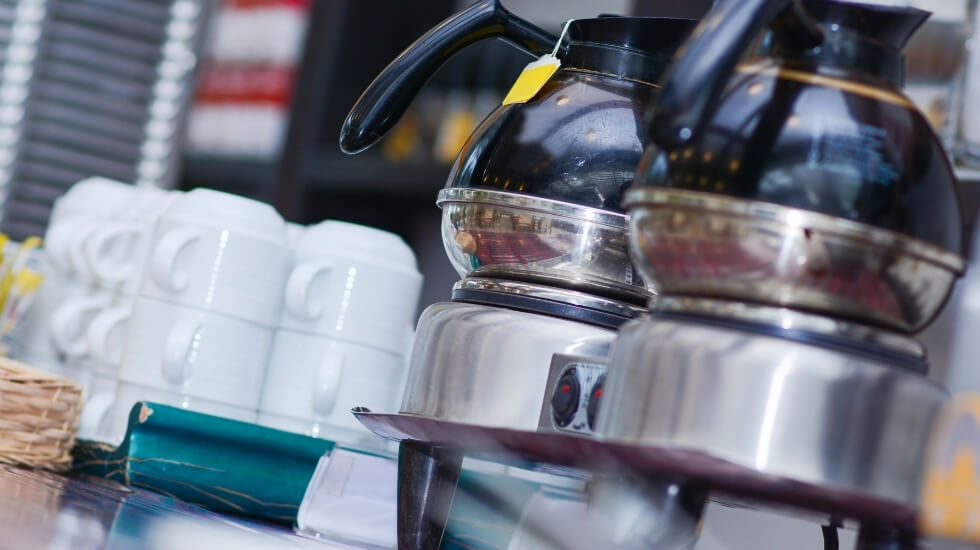
#7: Percolated Coffee
This one can’t be missed out when describing different types of coffee. Although often confused with Moka pot, Percolator is one of the earliest “modern” coffee-brewing equipment. The mechanism is very similar to that of a drip coffee maker.
Instead of electricity, a Percolator uses heat from the stovetop to boil the water and force it through a central tube.
The rest is pretty much the same. The only main difference between a drip machine and a percolator lies in the way they are built. A percolator looks like a kettle containing a filter basket and a tube.
The percolation process takes 5-10 minutes to complete. The longer you let the water cycle through the grounds, the stronger your brew gets. Also, remember that percolated coffee is extremely hot. Those who like their coffee piping hot should consider getting a percolator.
Taste of Percolated Coffee: I find the cup profile noticeably similar to drip coffee. When brewed for a longer period, the resulting brew tastes almost as rich as French Press coffee.
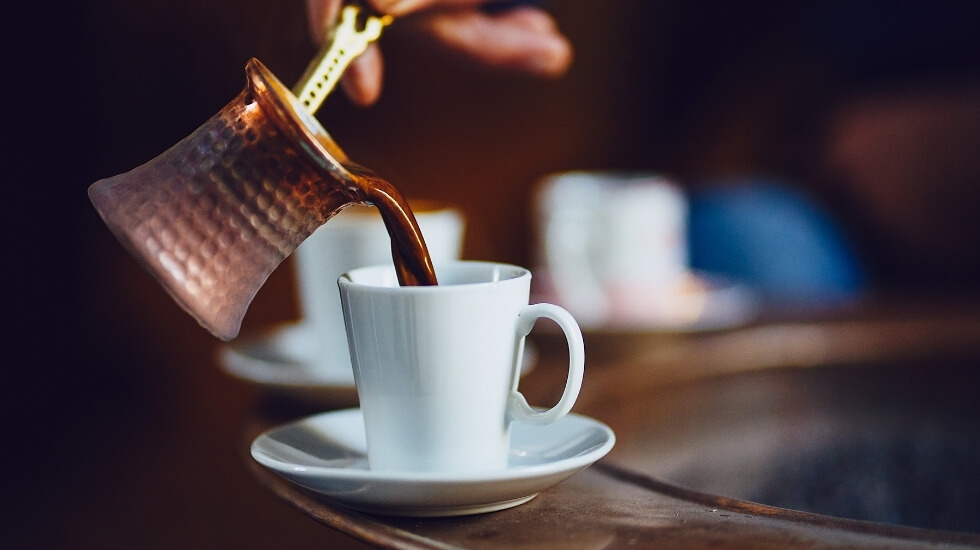
#8: Turkish Coffee
The brewing method for Turkish coffee is a bit aggressive, I’d say. But I don’t mind any amount of aggression as long as the coffee tastes good.
Turkish coffee is prepared by boiling very finely ground coffee and sugar in water in a special pot called cezve.
There’s no filter involved here. You will need to boil it for 3-4 minutes over medium heat. Boiling Turkish coffee like a pro has a learning curve.
Taste of Turkish Coffee: Intense bittersweet coffee with an aroma that hits the right spot – that’s Turkish coffee for you. It’s a highly caffeinated beverage. So maybe avoid it before going to bed?
Recommended article: Espresso vs Turkish coffee which one is better for you?
Other Brewed Coffee Types
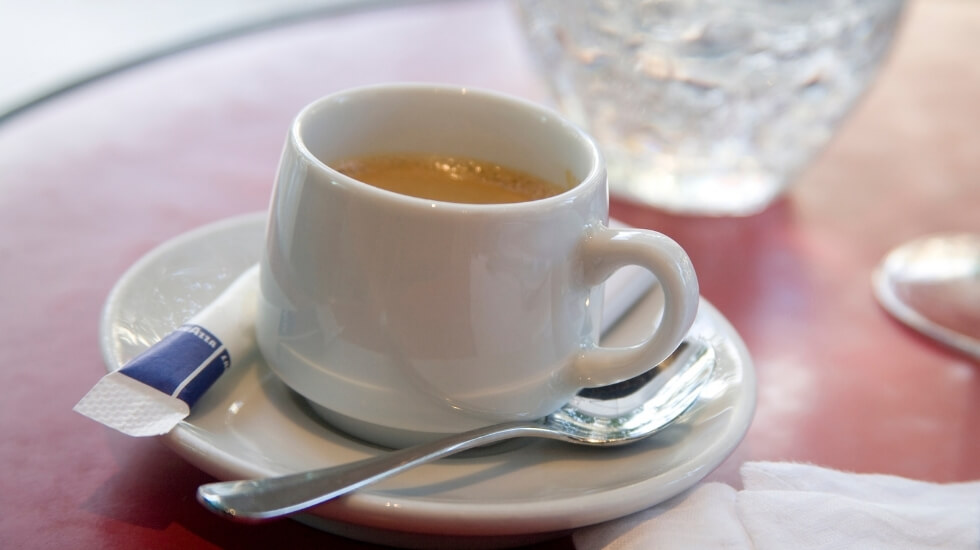
Café Au Lait
Café au lait is native to France and simply translates to coffee with milk. To make authentic café au lait, add equal amounts of strong drip coffee/French Press coffee and scald it.
That’s it. It’s the only non-fancy French thing I know of.
This coffee is less milky than a latte. It contains just the right amount of milk required to cut through the bitterness of the coffee. Those who love their coffee hot and milky will drink this any time of the day.

Cowboy Coffee
A camping essential, Cowboy coffee is worth a try if you have no equipment but you badly want freshly brewed coffee. The process is very simple. Put some water to boil, add coarsely grind coffee to it, and keep boiling until the grounds sink to the bottom. Pour and serve.
It’s not the fanciest cup of Joe but it will give you just the right amount of caffeine kick. Some adventurous souls would add a pinch of salt or crushed eggshells to the boiling coffee to improve the taste.
I know a lot of campers and backpackers who swear by this coffee. According to them, boiling the water to perfection is the key. And when done correctly, it yields a heavy-bodied, bold brew.

Espresso
Espresso is a highly concentrated coffee originating in Italy. Almost every popular coffee drink today uses espresso as its base. The most glorious aspect of an espresso is the thick layer of crema on top.
Crema is nothing but an emulsion of the natural oils present in the coffee beans. Many coffee stalwarts believe that crema doesn’t affect the taste of espresso.
However, it leaves a luscious mouthfeel and helps to round off the taste of the brew. Crema also allows the coffee’s pronounced flavors to coat your palate, causing a lingering aftertaste.
Taste of Espresso: A properly pulled espresso shot should be balanced, above all else. Sourness, sweetness, bitterness, body – a perfect espresso is a harmony of all these elements.
Don’t miss out:
If it’s too bitter, too acidic, or too overwhelming, it’s a poorly made espresso. And life is too short to keep drinking that thin-bodied, sour, sad mess.
Variations Based on Strength of the Shot of Espresso
Baristas would often calibrate the brewing ratios and brewing time to fine-tune the taste of the espresso-based beverages. Mainly 4 kinds of espresso shots are used as the base of these drinks –
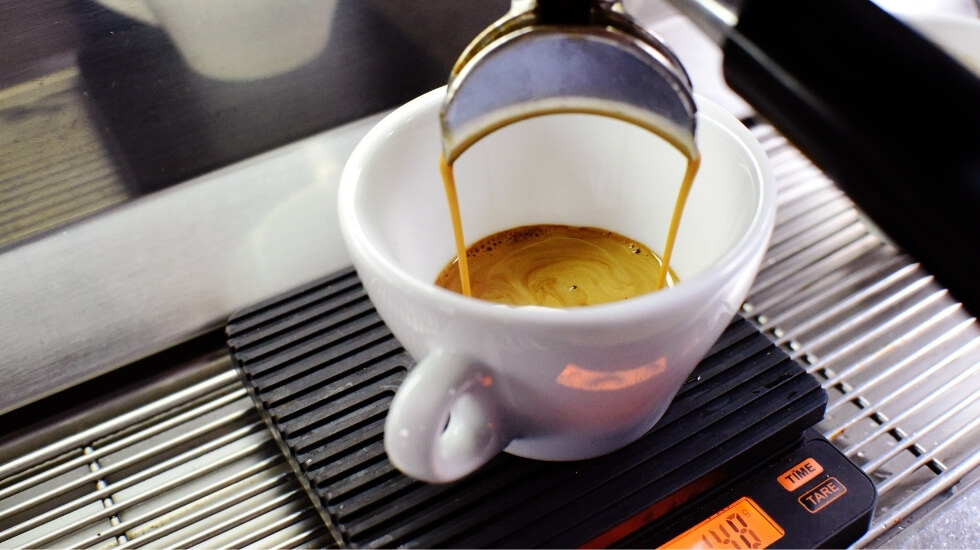
Single and Double Espresso
It’s literally one single shot of espresso traditionally made using a 1:4 brewing ratio. 7-9 grams of dose extracted for 25-30 seconds will yield 30 grams of coffee.
Double espresso, Doppio, or espresso normale requires you to double the dose to double the yield. Traditional Italian coffee bars will use 14-18 grams of coffee to pull 60 grams of espresso.
However, the modern method uses a 1:2 brewing ratio to achieve a better balance of flavors. If you’re new to making espresso, the 1:2 would be a good starting point for you.
You can always make small adjustments to refine your shots to suit your palate.
1:2 brewing ratio is easy to work with. 18 grams in, 36 grams out for 25-27 seconds. Start with this formula and see how it goes.
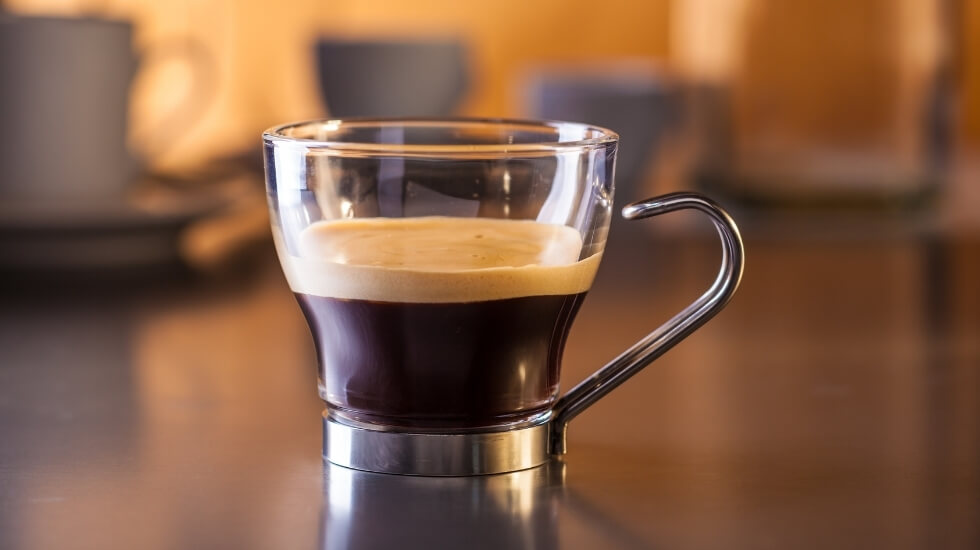
Ristretto
Making espresso-based drinks with double ristretto is a standard practice in Australia and New Zealand. A ristretto is simply a more concentrated form of espresso.
Ristretto is traditionally pulled by cutting down the extraction time. However, this method isn’t fail-safe.
It can easily lead to sour, under-extracted coffee. Modern baristas go with a 1:1 ratio and pull the shot for 40-45 seconds. Some like to brew their ristrettos for 25-30 seconds.
The method that works for my ristrettos is 20 grams in, 20 grams out for 30 seconds.

Lungo
A longer espresso – that’s what it means. A lungo shot is pulled for a longer brewing time to get a higher yield. The traditional lungo recipe calls for 14 grams of coffee dose brewed for up to a minute to yields 90 grams of coffee.
The alternative method uses a 1:3 brewing ratio and 45-50 seconds of brewing time to pull a shot of lungo. Although lungo is a more watered-down form of espresso, the longer extraction time can make it taste bitter.
Making espresso can be intimidating even for the most seasoned baristas. None of the recipes you’ll read in a book or on the web are set in tone. Use them as a baseline and keep making adjustments until you find the right recipe for yourself.
Don’t expect to pull the perfect shot on the first attempt. It will take you a while to dial in your shots according to the quality of your coffee and setup.
Popular Espresso Based Beverages (types of coffee based on Espresso)
I may have to write a book to talk about all the beverages that use espresso as their base. Since that’s off the table, I’ll keep the descriptions short.
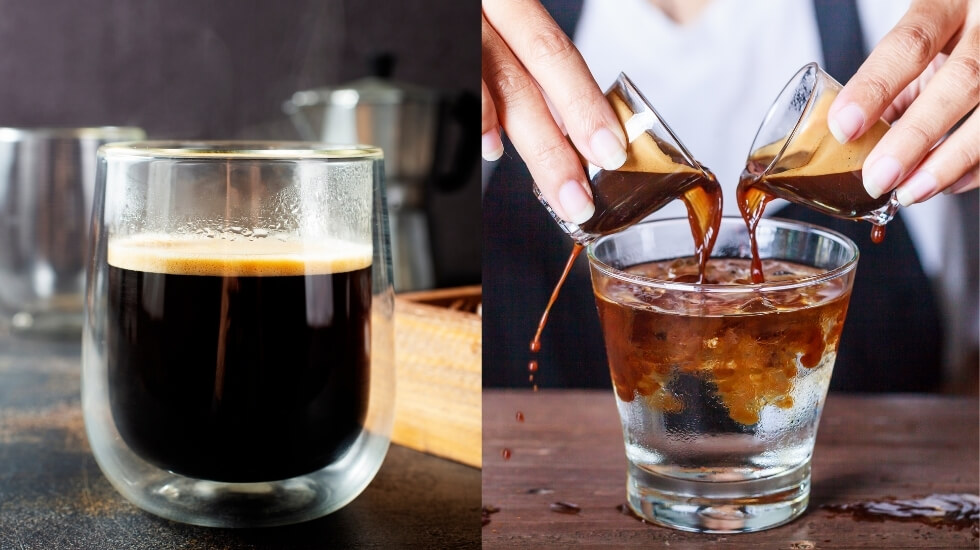
Americano
A double shot of espresso watered down with 90 ml of hot water – that’s Americano for you. Those who would like to tone down the intensity of the espresso but not mask it with milk should definitely try Americano.

Cappuccino
1/3rd espresso, 1/3rd steamed milk, 1/3rd microfoam makes a cup of cappuccino. The milk to coffee ratio makes it a stronger drink than a latte or cafe au lait. And the thick, velvety layer of foam creates a luscious mouthfeel.
If a strong, frothy, delicious cup of java is what you’re after – go with a Cappuccino.
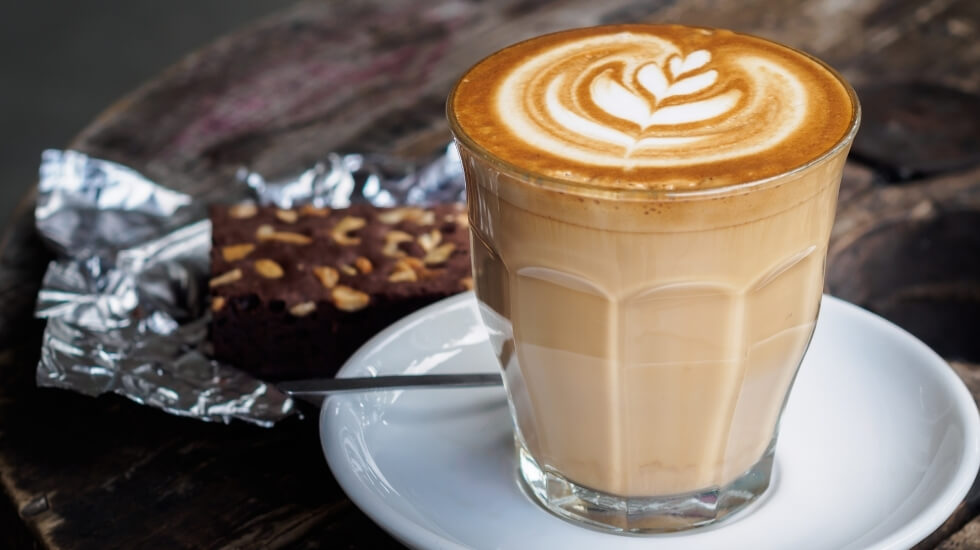
Latte
One of the most popular coffee beverages in the world, a latte is a double shot of espresso with 8-15 oz. of steamed milk. Some cafes make it with a single shot of espresso as well.
Latte is topped off with about 1 inch of microfoam. The layer should be thick enough to let you create latte art. Too much foam will turn it into a milkier version of cappuccino.
If you’re craving a lighter drink, go with a latte. Else, order/make a cappuccino.
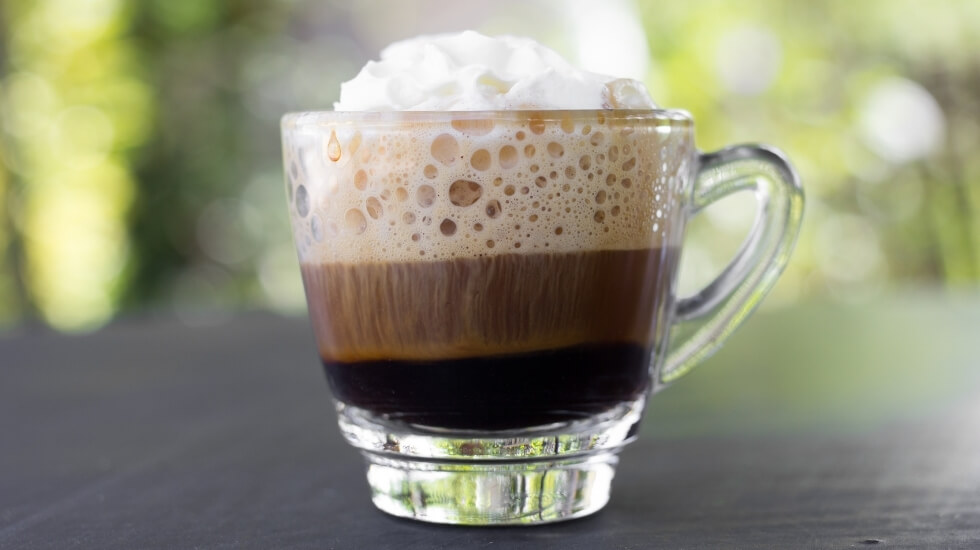
Macchiato (Café Noisette in France)
A double shot of espresso with a dash of milk foam is the recipe Italian baristas follow. The French variation calls for a dash for hot milk instead of foam. That’s the only difference.
Cafes that make macchiatos like it’s some hippy brother of latte aren’t worth visiting. Macchiato only requires a dot of foam/milk to compliment the boldness of the espresso.
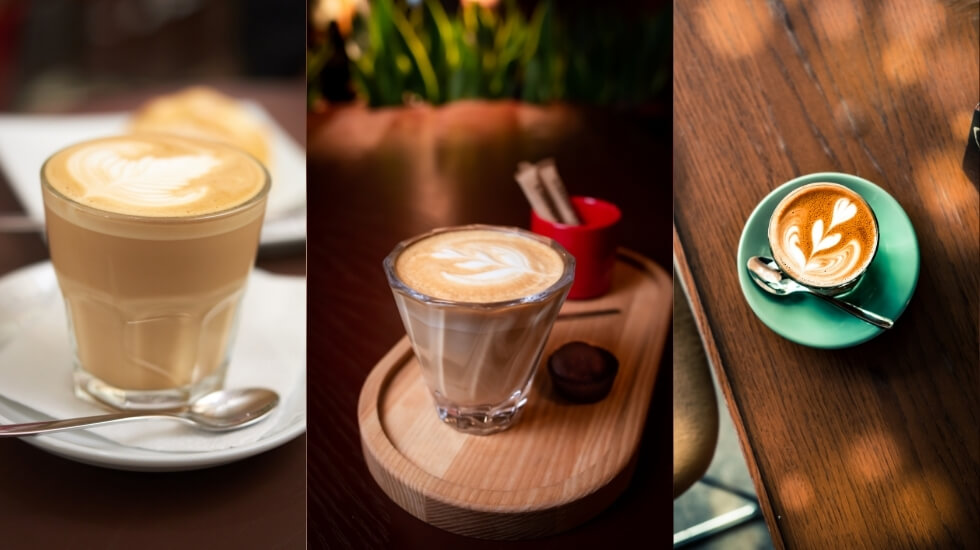
Flat White
A gem from Australia, I personally think flat white is the best milk-based espresso drink to exist.
The recipe may differ from place to place. So please don’t start screaming bloody murder if the recipe I’m about to mention isn’t exactly the one you use.
Flat white is double ristretto mixed with steamed milk in a 1:1 ratio. The name has “flat” in it, which means there should not be any foam on top.
If you steam and pour the milk into the coffee the correct way, you will get a very thin layer of foam anyway.
The key to making a perfect flat white lies in how you steam the milk. That thing takes some serious skill. You need to incorporate only a small amount of air into it.
It should ideally have a rich, velvety texture with little to no foam in it. It’s traditionally served in a 5.5 oz cup.
I personally find the coffee to milk ratio of flat white to be ideal for someone who likes to sip on rich, strong coffee. Flat white is a very balanced, creamy beverage that can make your day suck a little less.
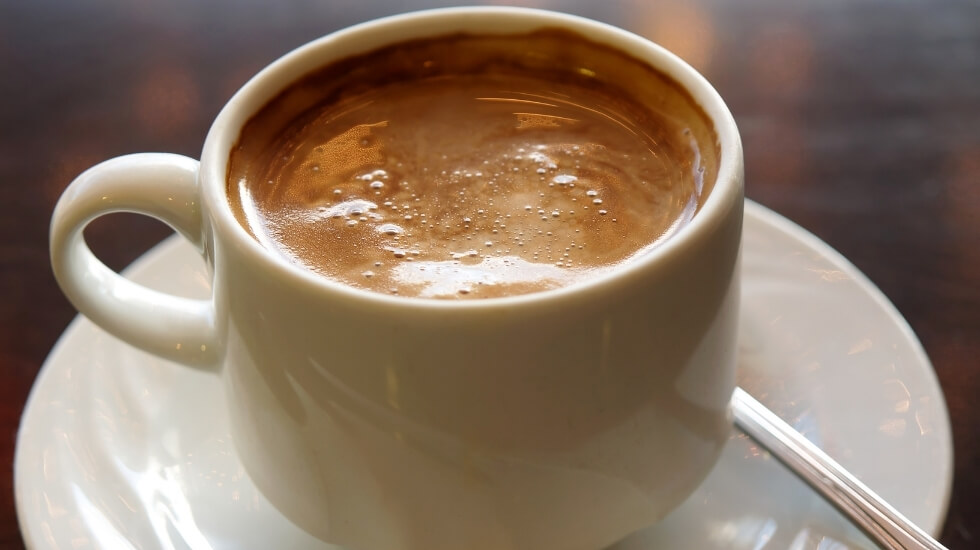
Cafe Con Leche
It’s a very popular coffee in Spain. Like Flat White, Con Leche exhibits a perfectly balanced cup due to the 1:1 ratio. However, Con Leche is served in a larger (6 oz.) cup, and the milk in it is not texturized.
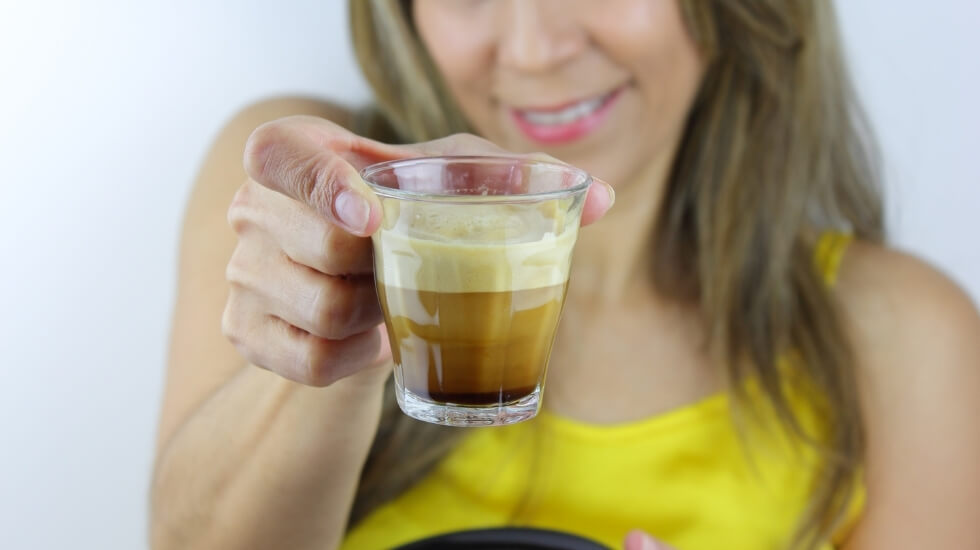
Cortado
Served in a 4.5 oz. demitasse glass, Cortado is a double espresso topped with a splash of scalding milk. It’s stronger than Cafe Con Leche and Piccolo combined.
The milk is used for cutting the acidity of the espresso. It’s another great choice for strong coffee enthusiasts.
Piccolo
If 1:1 cortado is too strong for your liking, try Piccolo. It contains a single shot of espresso/ristretto topped with foamed milk in a 3 oz. demitasse glass.
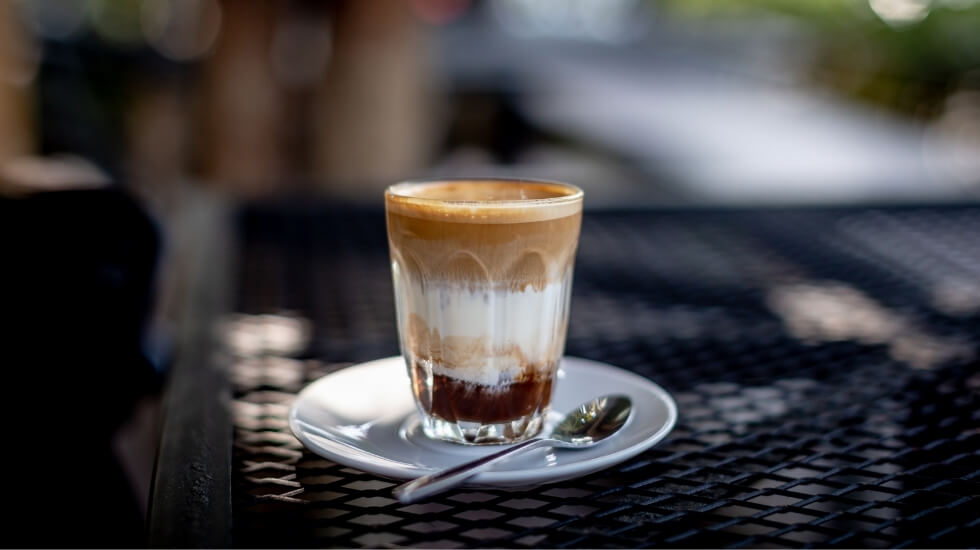
Mocha
1/3rd espresso, topped with chocolate syrup (measure it with your heart), and 2/3rd steamed milk – that’s the standard recipe for cafe Mocha.
Cafes would also decorate mocha with whipped cream and a generous sprinkle of cocoa powder.
If the idea of intense espresso with rich chocolate syrup and creamy milk sounds like a winning combination, go for a Mocha.

Cafe Crème
Double espresso with 30 ml of heavy cream is Cafe Crème. In a mood to indulge? This rich, luscious, creamy drink would be a perfect drink to kick start your weekend with.
Cafe Breve
Simply replace heavy cream with a similar quantity of steamed half and half. It’s finished with a glossy layer of foamed milk. Like Cafe Crème, it’s super-rich and creamy.
Café Bombón
Got a sweet tooth? Perhaps a double espresso topped with condensed milk is exactly what you need.
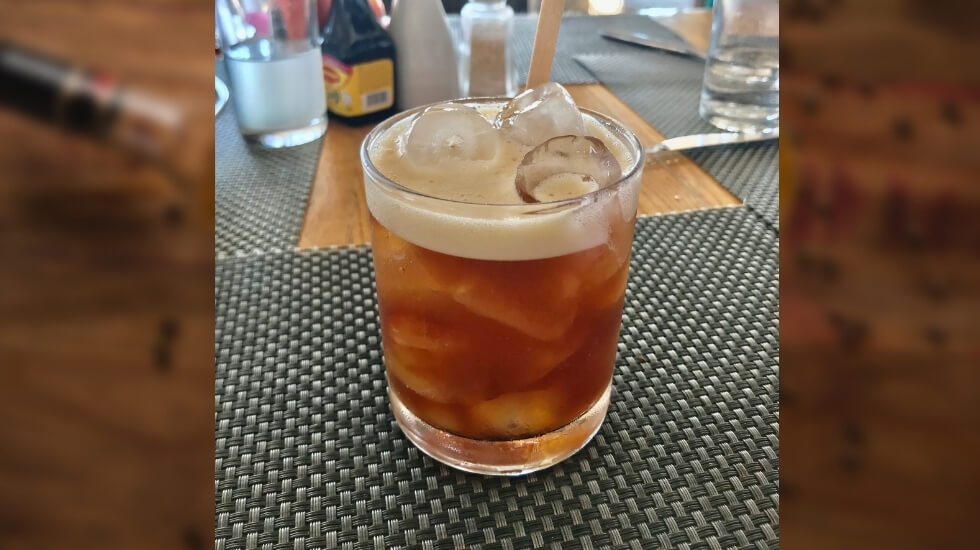
Carajillo
Feeling daring? Try this famous coffee from Spain made by jazzing up espresso with rum/whiskey/brandy.
Cuban Coffee
Cuban coffee is a sweetened espresso. The specialty of this coffee comes from dark brown sugar or demerara sugar.
Add a spoonful of espresso and vigorously stir it into the sugar in a bowl to create sugar foam or espumita.
Then pour the rest of the coffee into a bowl and gently mix the espumita with the coffee. And that’s how you make thick, ultra-bold, and rich Cuban coffee.
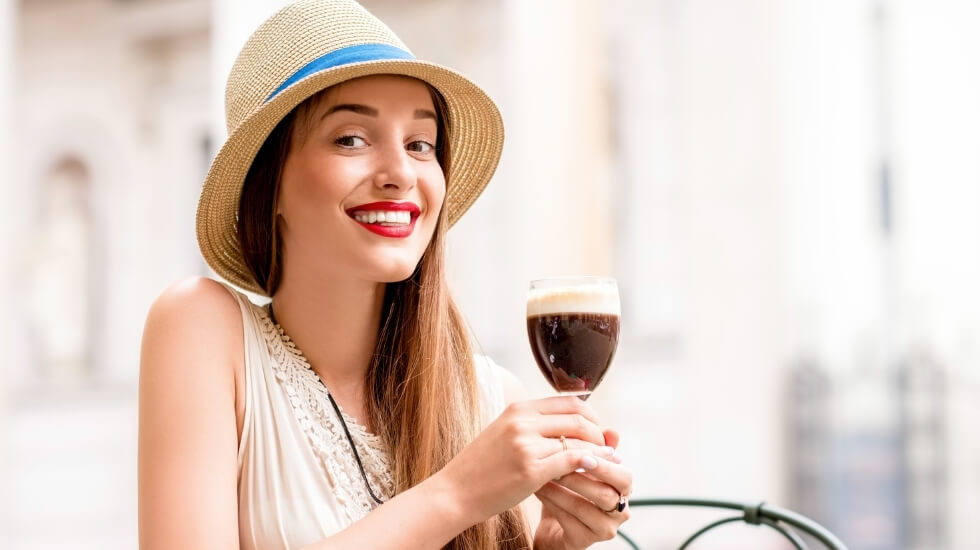
Bicerin
Native to Turin, Italy, Bicerin is the perfect post-meal dessert drink. It’s made with espresso, high-quality drinking chocolate, and finished with whipped cream.
Think of Bicerin as the more good-looking, charming, and richer cousin of Mocha. Bicerin doesn’t contain any milk, is carefully layered, and uses a really good quality drinking chocolate.
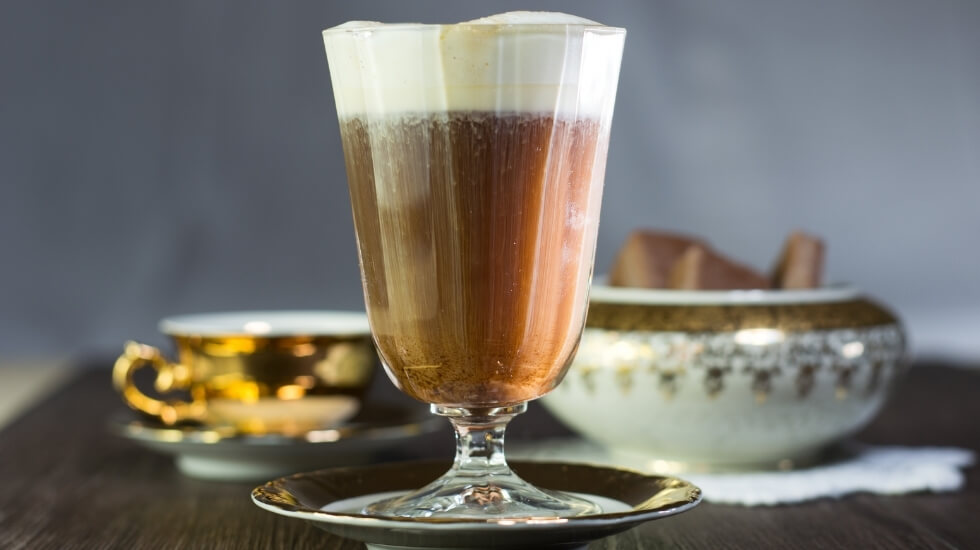
Irish Coffee
Mix espresso with Irish whiskey to create this bomb drink.
Espresso Con Panna (Known as Café Vienne in the U.S and Café Viennois in the U.K)
Craving for something simple but madly delicious? Add a generous dollop of whipped cream on a double shot of espresso. Panna, in Italian, means cream.
Depending on which part of the world you are in, you can also get steamed milk in your Con Panna.
Strong Coffee Drinks Made with Drip Coffee and Espresso
Need coffee so strong that even your neighbors wake up? Try mixing drip pour with espresso. Here are some legendary drip+espresso combinations you can try if you are feeling bold –
Dead Eye
The recipe calls for 90 ml espresso with 120 ml of drip pour. If your goal is to stay awake till eternity, try it.
Black Eye
Need a coffee strong enough to get you through a busy Monday? Mix 60 ml of espresso with 120 ml of drip coffee and sip away.
Red Eye
Not as strong as the previous two monsters but still quite bold, the Red Eye is a cheeky concoction of 30 ml espresso and 120 ml drip coffee.
Lazy Eye
Indeed the laziest of all the previously mentioned “Eyes”, A Lazy Eye is 120 ml decaf drip coffee with 60 ml. espresso. Take it down to 30 ml if you want an even lighter drink.
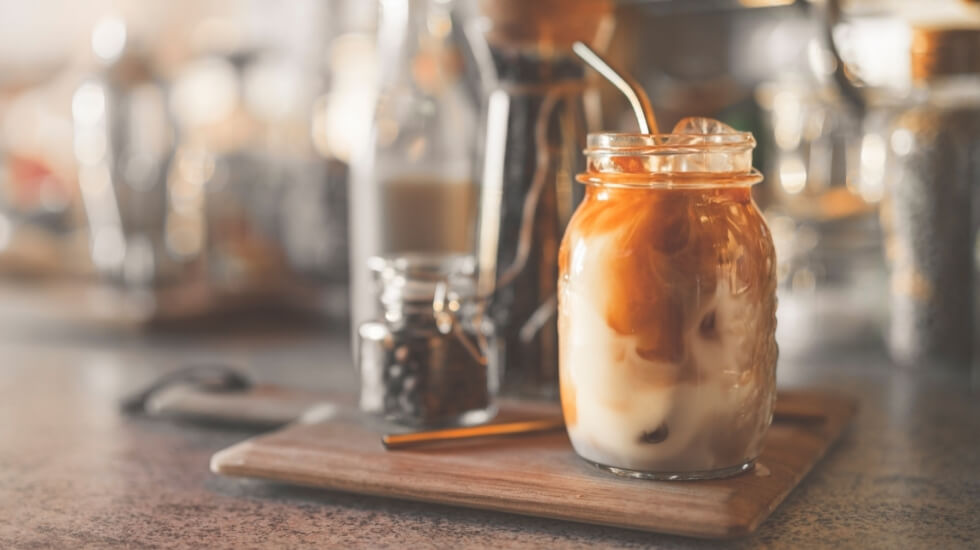
Cold Coffee
Cold coffee is up to 67% less acidic than hot coffee. If you have gastric issues, cold coffee would be a healthier choice for you. Cold coffee and cold brew aren’t the same. Cold-brew is merely one type of cold coffee. There are several other varieties.
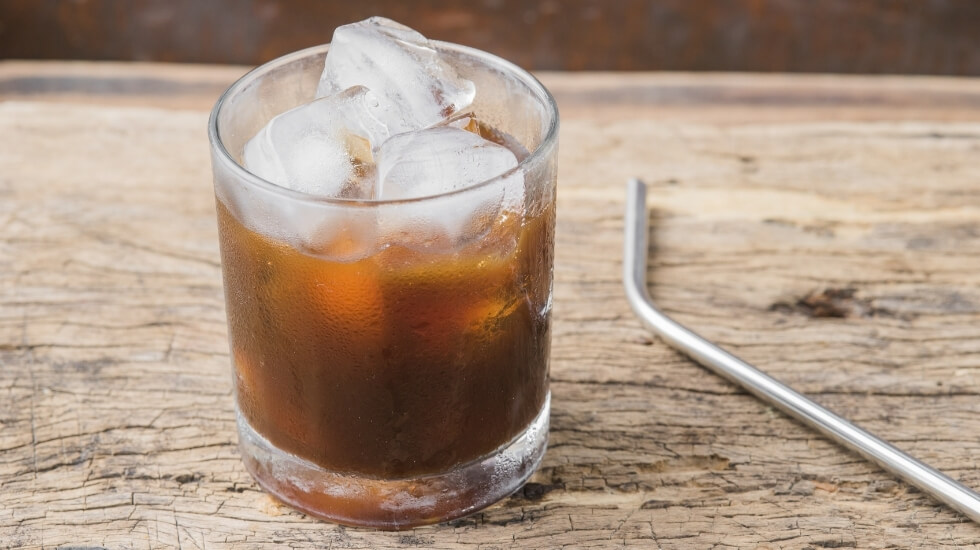
Iced Espresso
A single or double shot of espresso poured on ice – that’s your iced espresso or espresso on the rocks. It’s a refreshing pick-me-up that is perfect for any time of the day.
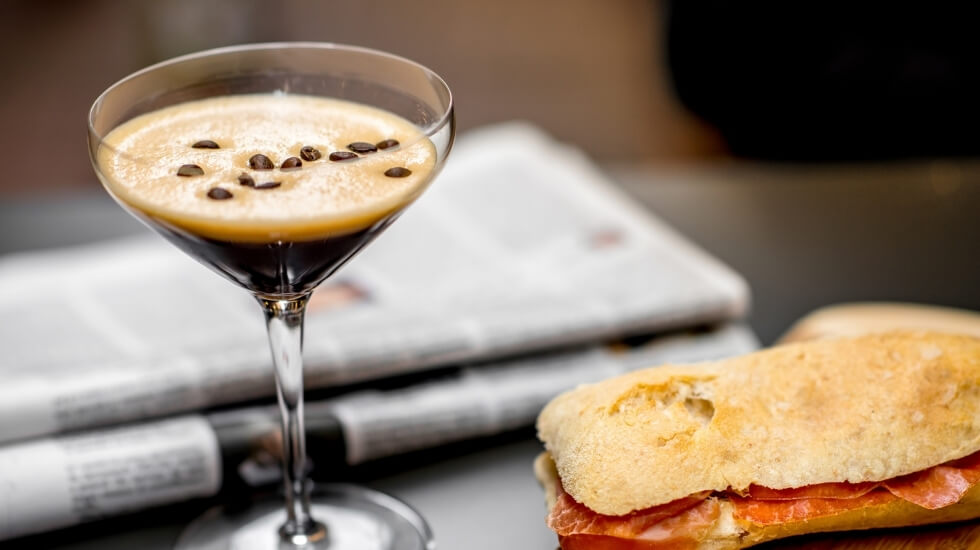
Caffè Freddo/Shakerato
It’s an espresso-based mocktail. To make Freddo or Shakerato, take a shaker or a jar, add ice, double espresso, one tsp of brown sugar and shake as you mean it.
Pour the drink into a snifter glass and let all your sorrows be washed away for a moment.
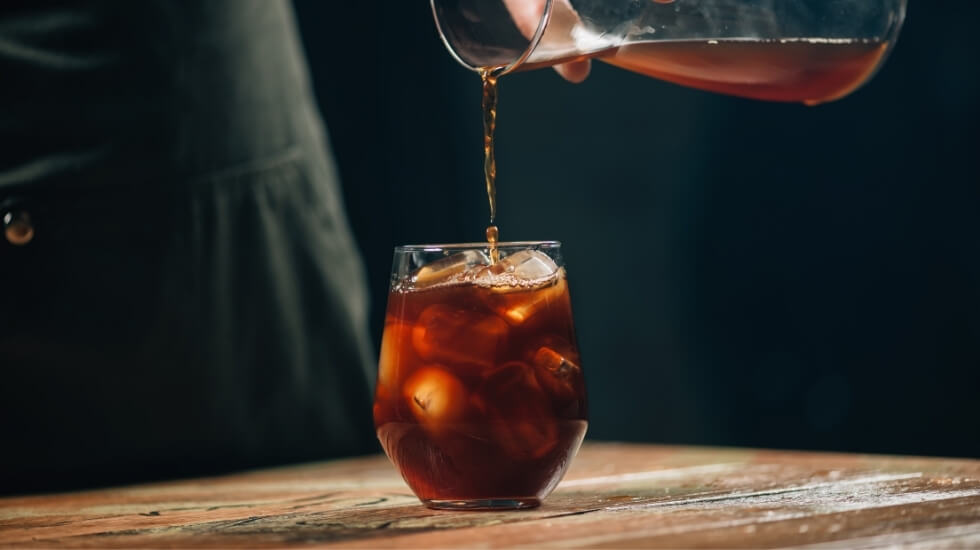
Cold Brew
Cold brewing is the process of steeping ground coffee at room temperature or cold water for 12-24 hours. The longer steeping time extracts more flavors and more caffeine from the beans. Cold Brew can be enjoyed on the rocks, with or without milk.
1:5 ratio steeped for 20-24 hours creates the most balanced cold brew, in my opinion. To make one liter of Cold Brew, take 200 grams of coffee, stir it into 1 liter of water in a cold brew coffee maker or mason jar. Let it steep for at least 20 hours.
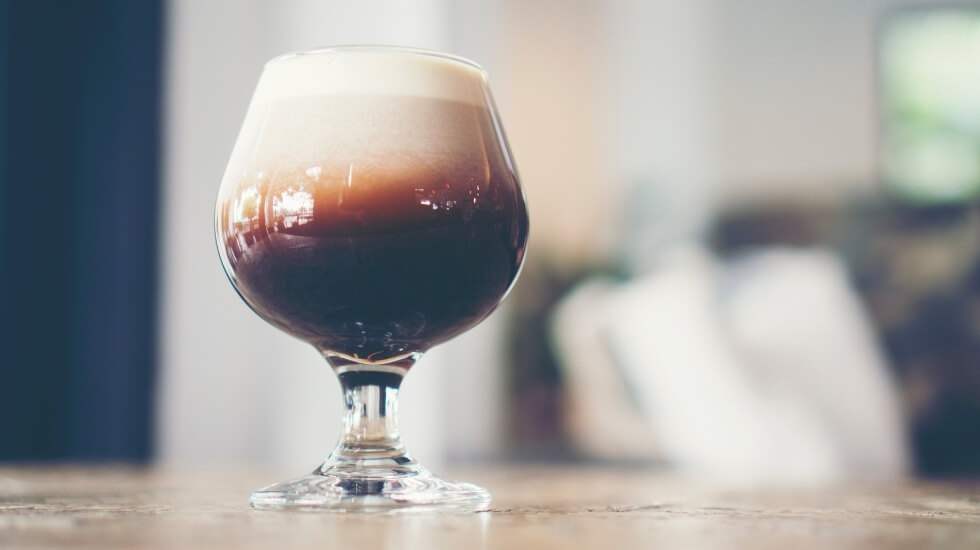
Nitro Cold Brew
Nitro cold brew has gained massive popularity lately. Adding nitrogen to cold brew helps to cut the acidity and bitterness and enhance the mouthfeel. For a smoother version of cold brew, go with Nitro.
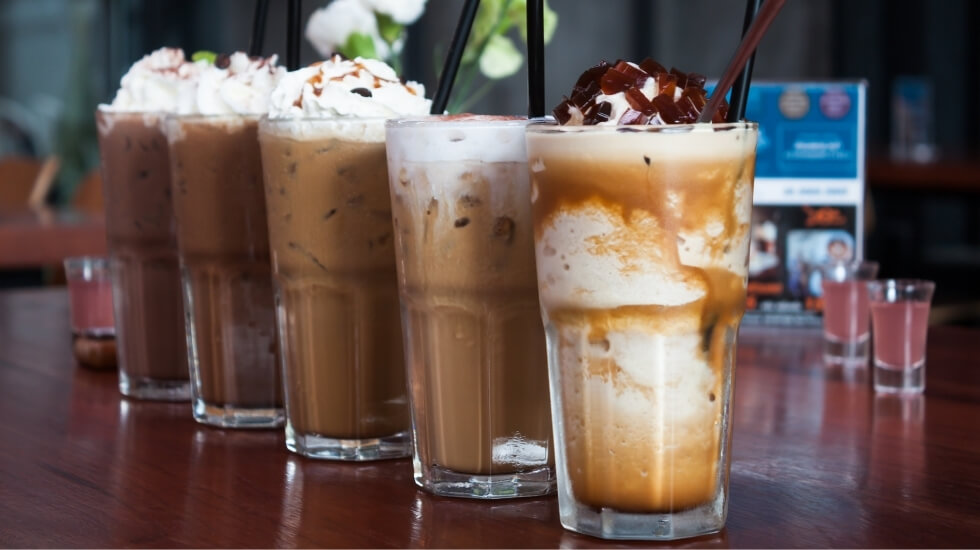
Frappe
This Greek coffee beverage is made with instant coffee, milk, sugar, and ice. Add all these ingredients into a blender or frappe maker. Blitz it until it reaches a slushy-like consistency.
Traditional Greek Sketo frappe contains only cold water, no milk. The milk variant is called Me Gala. It’s the perfect summer drink.
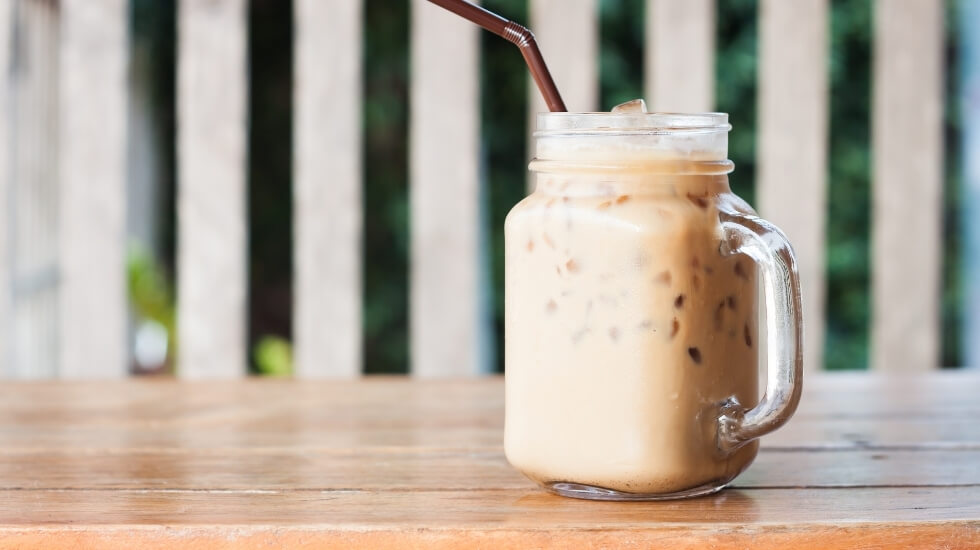
Frappuccino
Must have on each list, especially when discussing different types of coffee. No, it’s not an abbreviation of Frappe. Frappuccino is a trademarked brand of blended coffee by Starbucks. It’s a portmanteau of frappe and cappuccino.
It is made with espresso instead of instant coffee. All Frappuccinos contain milk and are flavored with ingredients vanilla, caramel syrup, chocolate syrup, and whipped cream.
It’s my go-to Starbucks order (mainly because their hot coffees scare me)
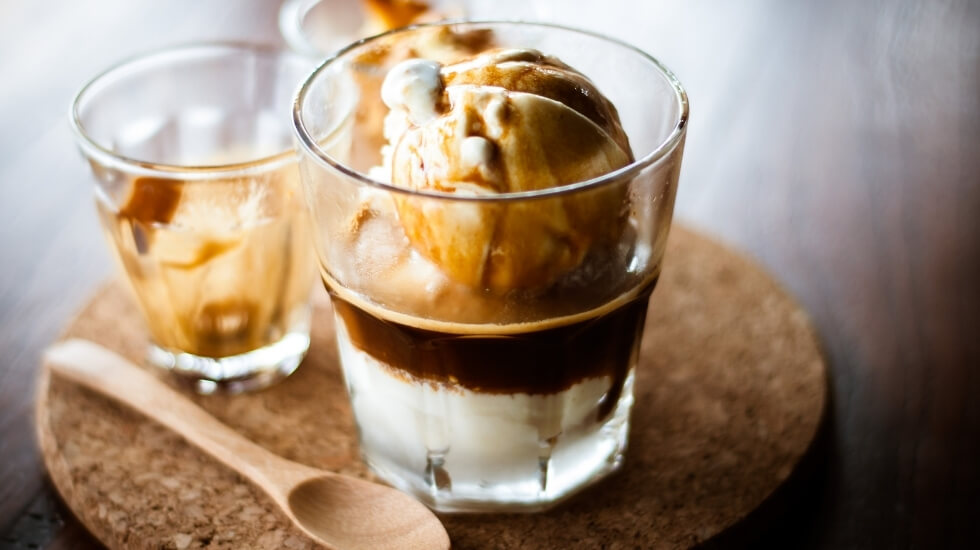
Affogato
The ultimate dessert for serious coffee lovers, Affogato is a shot of hot espresso poured onto a scoop of vanilla ice cream. The ice cream should be drowning in the coffee. It’s simple and fantastic.
Speaking of iced coffee, you can make an iced version of a cappuccino and latte by simply adding ice cubes to the drinks.
Also, you can create a plethora of hot and cold coffee drinks by combining different complementing elements with coffee. Dirty Chai Latte is a combination of tea and a single shot of espresso.
Frequently Asked Questions
What are the 4 types of coffee beans?
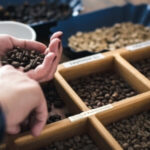
Arabica, Robusta, Liberica, and Excelsa are the 4 primary types of coffee beans.
Which types of coffee are the best?

There’s no definitive answer to that. It’s all about personal preference. People who like strong hot coffee will naturally gravitate towards espresso-based coffees. Those who like simple coffee would relish a steaming cup of drip coffee. If you chilled, refreshing drinks, try iced coffees.
Currently, the top 10 coffee brands in the world are:

Currently, the top 10 coffee brands in the world are:
Costa Coffee.
Starbucks.
Seattle’s Best Coffee.
Death Wish Coffee.
Peet’s Coffee and Tea
Gloria Jean’s Coffees.
Nescafe.
Folgers.
Dunkin Donuts.
Lavazza
Conclusion
The world of coffee is vast. There are so many different types of coffee to chose from, but with a little patience and some experiment, I’m sure you can find a coffee drink that makes your soul happy. Lastly, don’t forget that the quality of coffee relies heavily on the kind of coffee you choose.
So start your home brewing journey by investing in high-quality coffee beans and a burr grinder. Grinding your own beans will give you coffee a freshness pre-ground coffees can never match. Also, it’s very important that you weigh your ingredients before brewing your coffee.
Precision brewing espresso will require you to meticulously measure the dose and yield. Don’t measure your coffee by volume if you value consistency.
